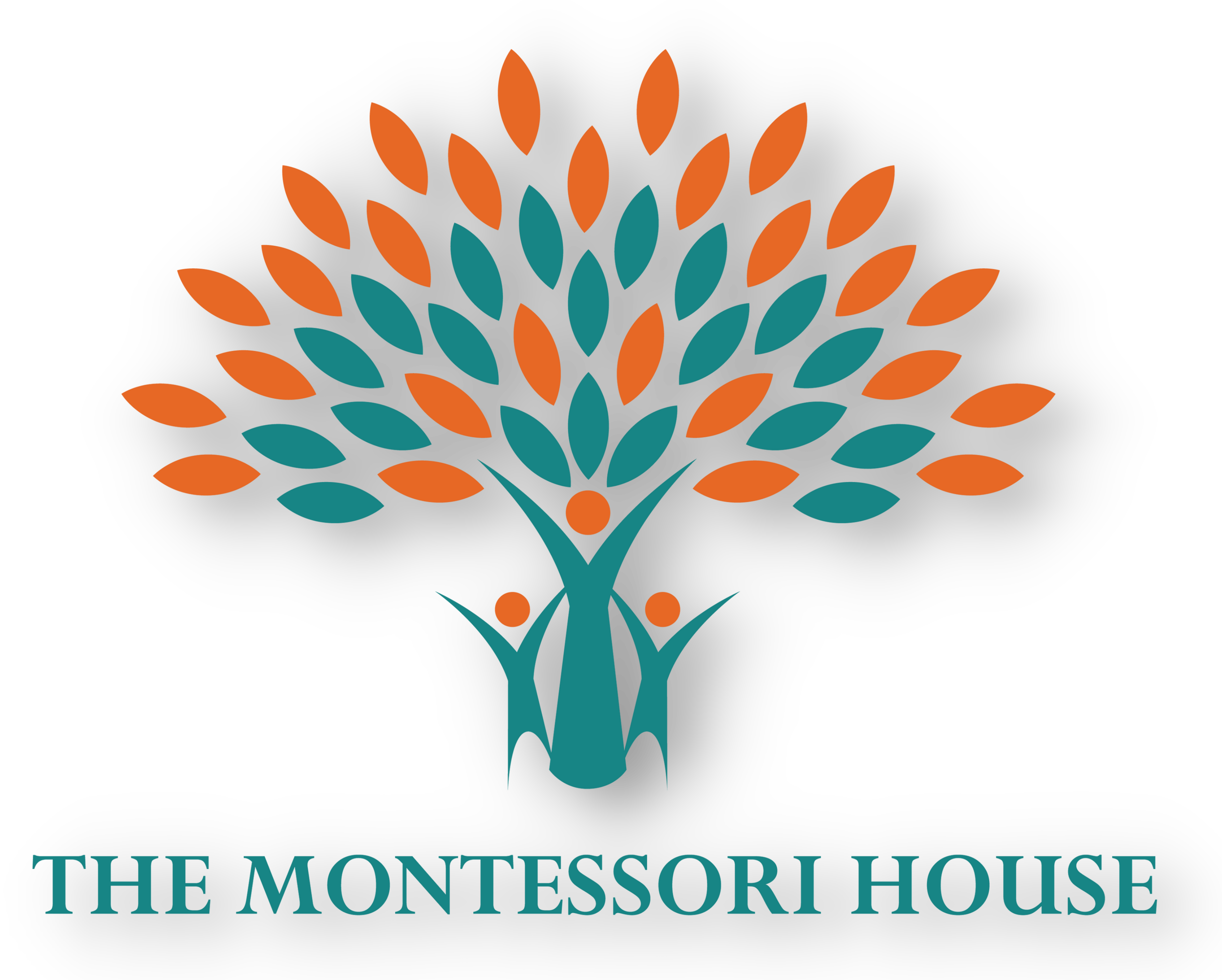Primary (2.5 – 6 Years)
Children from our toddler environment through transition period they are prepared for the primary environment. After 2.5 years of age with good motor skills and language. With Montessori adult observation and suggestion the child is helped through this process on daily basis.
In this area the environment is prepared according to the needs and development of a 3-6 year old child. The child from toddler environment there needs are different from primary children, so along the growth and developmental process of the children our prepared environment also grows and adapt with them. Our trained Montessori adult prepare the environment and keep updating according to the children need and experience.
Areas of work
Practical life :
The exercises of practical life are formative activities, a work of adaptation to the environment. Such adaptation to the environment and efficient functioning therein is the very essence of a useful education. Dr. Maria Montessori
Practical Life activities aren’t directly about teaching a child to clean and dress himself but more directly on completing a work cycle, concentrating and being responsible for their environment. Young children in Montessori classrooms learn to take care of themselves and their environment through activities such as hand washing, dusting, and mopping. These activities help toddlers and preschool-age children learn to work independently, develop concentration, and prepare for later work with reading and math; older children participate in more advanced activities.
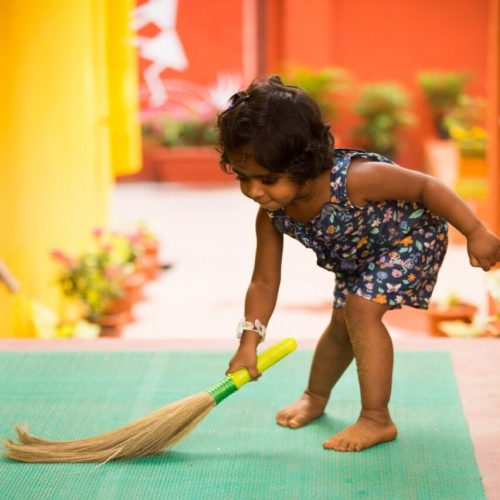
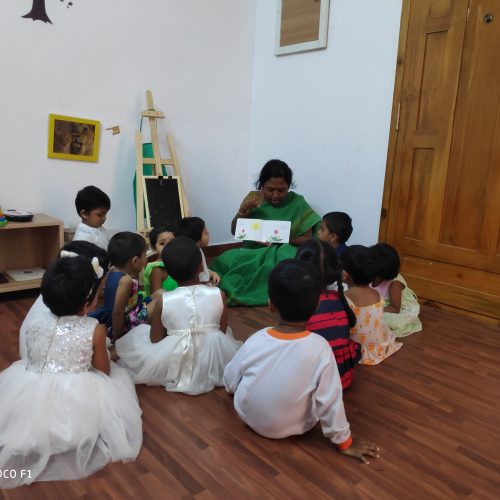
Sensorial :
“The senses, being explorers of the world, open the way to knowledge. Our apparatus for educating the senses offers the child a key to guide his explorations of the world… ” – Dr. Maria Montessori
The purpose and aim of Sensorial work is for the child to acquire clear, conscious, information and to be able to then make classifications in his environment. Montessori believed that sensorial experiences began at birth. Through his senses, the child studies his environment. Through this study, the child then begins to understand his environment. The child, to Montessori, is a “sensorial explorer”.
Through work with the sensorial materials, the child is given the keys to classifying the things around him, which leads to the child making his own experiences in his environment. Through the classification, the child is also offered the first steps in organizing his intelligence, which then leads to his adapting to his environment.
Language (Tamil, Hindi and English) :
“The function of the alphabet has not been taken into consideration in the ordinary method of teaching writing. It is presented only as an analysis of the written language, instead of what in fact it is, the faithful reproduction of the spoken language.” – Dr. Maria Montessori
When the child arrives in the Montessori classroom, he has fully absorbed his culture’s language. He has already constructed the spoken language and with his entry into the classroom, he will begin to consolidate the spoken language and begin to explore the written forms of language.
Because language is an intrical involvement in the process of thinking, the child will need to be spoken to and listened to often. The child will need a broad exposure to language, with correct articulation, enunciation, and punctuation. The child will need to experience different modes of language and to hear and tell stories. Most importantly, the child needs to feel free and be encouraged to communicate with others.
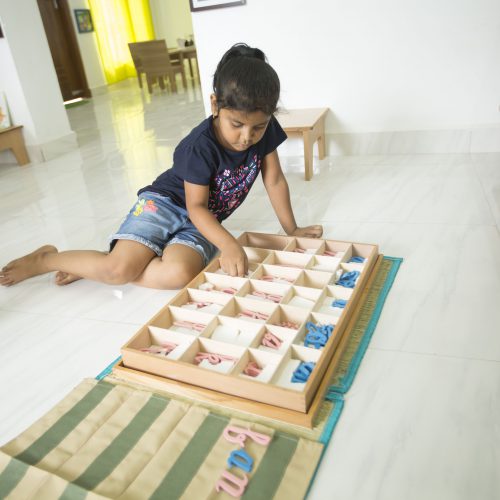
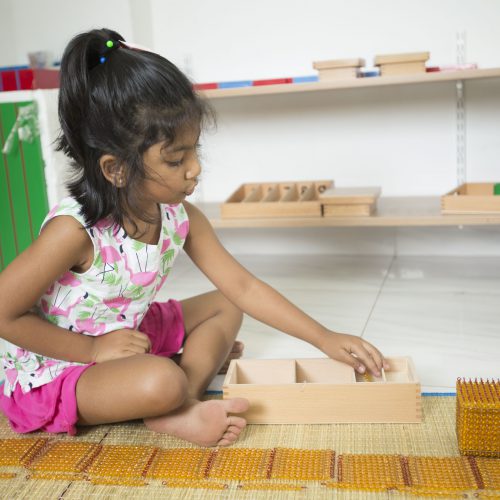
Mathematics:
“It is almost possible to say that there is a mathematical relationship between the beauty of his surroundings and the activity of the child; he will make discoveries rather more voluntarily in a gracious setting than in an ugly one.”- Dr. Maria Montessori
Math is all around the young child. Number itself cannot be defined and understanding of numbers grows from experience with real objects but eventually they become abstract ideas. It is one of the most abstract concepts that the human mind has encountered. No physical aspects of objects can ever suggest the idea of number. The ability to count, to compute, and to use numerical relationships are among the most significant among human achievements. The concept of number is not the contribution of a single individual but is the product of a gradual, social evolution. The number system which has been created over thousands of years is an abstract invention. It began with the realization of one and then more than one. It is marvelous to see the readiness of the child’s understanding of this same concept.
Cultural activities & Art






